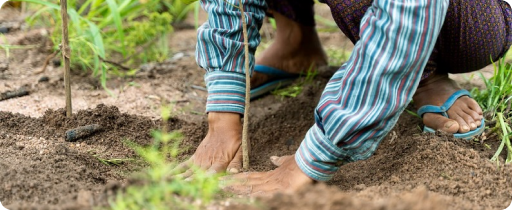Welcome to the FERM Common Search Engine for Good Practices on Ecosystem Restoration!
This common search engine is the result of a collaborative effort by the FAO-led
Best Practices and
Monitoring Task Forces of the UN Decade on Ecosystem Restoration, combining the need to share and promote good practices and the need to transparently track progress of our collective restoration efforts.
Purpose
The primary purpose of the FERM Common Search Engine is to foster mutual learning and knowledge sharing among restoration practitioners by systematically disseminating good practices resulting from restoration initiatives. This will prevent them from repeating mistakes and will encourage the replication and adaptation of good practices in different contexts with similar goals, enhancing their capacity to undertake and scale up effective restoration efforts across all sectors, ecosystems, and regions.
Using the FERM Common Search Engine
To facilitate access to good practices on ecosystem restoration, the common search engine brings together good practices documented from four collaborating platforms: the
FERM Registry,
LIFE GoProFor,
Panorama Solutions and
WOCAT. Users can effectively search, filter, and access an extensive array of good restoration practices according to their specific needs. There are two search modalities available:
- Open browser search: Users can type in keywords to find relevant good practices.
- Refined filters: Users can filter practices based on degradation drivers addressed by the practice, ecosystem, region, source, and language.
What is a good practice for ecosystem restoration?
A good practice for ecosystem restoration is an evidence-based approach, technique or technology that contributes to achieving one or more objectives of a restoration initiative, maximizing benefits for nature and people across different contexts. It is usually a component of a restoration initiative that has been applied, tested and replicated in different contexts and therefore, can be easily transferred and/or adapted to other initiatives with similar goals.If a practice has been tested solely in a specific context, it is considered a promising practice, then results need to be proven outside the current situation for replicability and adaptability to different contexts.
How can restoration practices be shared through the FERM common search engine?
Restoration practitioners can document their practices through any of the following collaborating platforms: the
FERM Registry,
Panorama Solutions and
WOCAT. By doing so, you can contribute to our collective effort to inspire others with your valuable experiences.
For more information on how to submit good practices through the
FERM Registry, please follow this
link.
For more information on how to submit good practices through
Panorama Solutions, please follow this
link.
For more information on how to submit good practices through
WOCAT, please follow this
link.
Providing feedback
We continuously strive to improve our common search engine and make it more user-friendly. If you have any feedback or suggestions regarding your experience while consulting good practices through the FERM common search engine, please click HERE to provide your valuable input.


